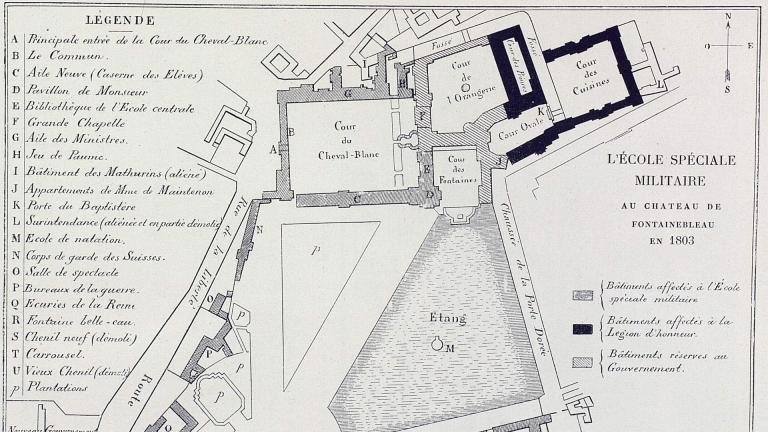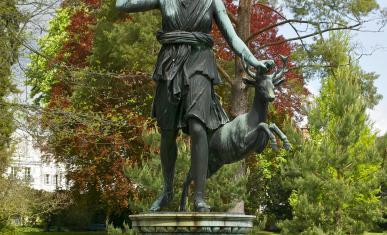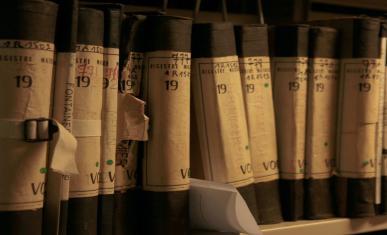May 1802: the École spéciale militaire de Fontainebleau was created
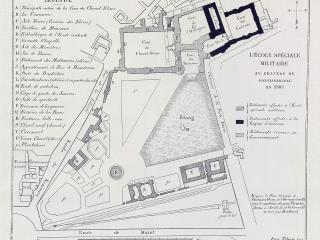
A School "intended to teach [...] pupils after secondary schools"
With the Law of 11 Floréal year X (1st May 1802), the First Consul instituted a special military school for 500 students in Fontainebleau:
"In one of the Republic’s strongholds, a special military school will be established to teach a portion of the pupils graduating from secondary school, the elements of the art of war. It will be made up of 500 pupils forming a battalion, who will be taught military service and discipline. Of the 500 pupils, 200 will be taken among scholarship secondary school pupils, and 300 among boarders and day boys, depending on their end-of-study exams. Every year, 100 of the former and 150 of the latter will be admitted; they will be maintained for two years at the expense of the Republic in the special military school: the two years will be counted as service time. Based on a report on the conduct and talents of the pupils in the special military school, the government may appoint a number of them to army jobs. The special military school will be in the responsibility of the Minister of War. " (Title VI of the Act)
It should be noted there had been some attempts under the Ancien Régime to set up military schools, without lasting success. Napoleon Bonaparte himself came from one of them since he received military training at the École de Brienne followed by the Military School created in Paris in 1751.
A government decree dated 8 Pluviôse, year XI set out the new school’s organisation, with regulations consisting of 19 articles. The emperor named it Special Imperial Military School in 1805.
Set-up in Fontainebleau
The school was set up in the Château de Fontainebleau, in place of the central school. At the time the palace was in a state of ruin and had been abandoned at the end of the Revolution. The new school occupied part of the wing of the Louis XV building, the Cour du Cheval Blanc and the surrounding buildings, with the exception of the chapel and part of the François I gallery, and part of the park. The "Common" to the west of the Cour du Cheval Blanc was torn down in 1809 and replaced with the ceremonial gate which is still in place today. It also involved buying back parts which had been transferred to the State a few years earlier: the old and new kennels, the Queen's old stables, the former war offices, the Swiss guard house and the auditorium. From the outset, it was necessary to carry out some works to restore all of these buildings.
The riding arena, which is now located next to the English Garden, was built in 1807 for the cavalry pupils.
Pupil education
Education was exclusively military. Pupils were aged between 16 and 20 years old and were either boarders (for 1,200 francs) or scholars.
The pupils were soldiers, and as such they were subject to the same strict military discipline as in regiments: roll calls, chores, attire, inspections and so on. They formed two battalions within the School, divided into nine companies, including an elite company, each of which was commanded by a non-commissioned officer picked among the pupils. Six months after admission, every pupil had to be able to educate his peers. As in the army, they received a salary: 30 centimes a day, half of which was used to buy and maintain the "small equipment" provided to each pupil (linen and shoes). They were housed in "dormitories" and did their own cooking and room chores.
The courses included weapon handling, mathematics, surveying, fortifications, military administration, history, geography, literature and so on. In addition, there were physical exercises such as artillery manoeuvres, horse riding, gymnasium and swimming.
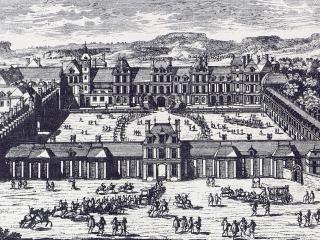
The School's administration
The Special Military School, under direct supervision from the Minister of War, was commanded by Berthier, vice-connétable (vice-constable) and head of the first cohort of the Légion d’Honneur, in which capacity he resided in Fontainebleau at the Hôtel Pompadour. On site, studies were directed by General Bellavène, assisted by Colonel Kuhmann, Commandants Petit and Dornier, War Commissioner Damesme and Chaplain and Librarian Méhérenc de Saint-Pierre. Teachers were appointed by the First Consul, a guarantee of excellence in their teaching, as were the pupils entering the School.
Departure from Fontainebleau
Because of the relentless need for trained soldiers to join the troops engaged in the Napoleonic Wars, pupils left the school after one year only, thus not respecting the two-year training period dictated by the regulations. The School of Fontainebleau had trained over two thousand second lieutenants in infantry and cavalry when it was transferred to Saint-Cyr in 1808. There were more and more pupils and they were cramped in buildings which were in urgent need of extension and restoration.
Furthermore, Napoleon wanted exclusivity in the use of the buildings of the Château de Fontainebleau for the needs of the court: he had already taken over the pond and the carousel from the School in 1804 and a wing of the Cour du Cheval Blanc in 1807. Therefore, he decided to move the École spéciale militaire to Saint-Cyr, where premises were available following the move of Le Prytanée to La Flèche.
The Emperor also created a military school in 1809 in Saint-Germain, specialising in cavalry, with training lasting 3 to 4 years. It also joined the Saint-Cyr entity after barely five years of existence, in 1814.
Sources and bibliography:
- Lhuillier Théophile, L’École centrale et l’École militaire de Fontainebleau : an IV-1808 (The Central School and the Military School of Fontainebleau: year IV-1808), Paris, 1872 (AZ9857),
- Titeux Eugène, Saint-Cyr et l’école spéciale militaire en France, Fontainebleau – Saint-Germain depuis leur fondation jusqu’en 1896 (Saint-Cyr and the special military school in France, Fontainebleau - Saint-Germain from their foundation up to 1896), Paris, 1914-1915 (F°6),
- Map of the Special Military School of the Château de Fontainebleau, 1803, F°6_1, Seine-et-Marne department archives.
